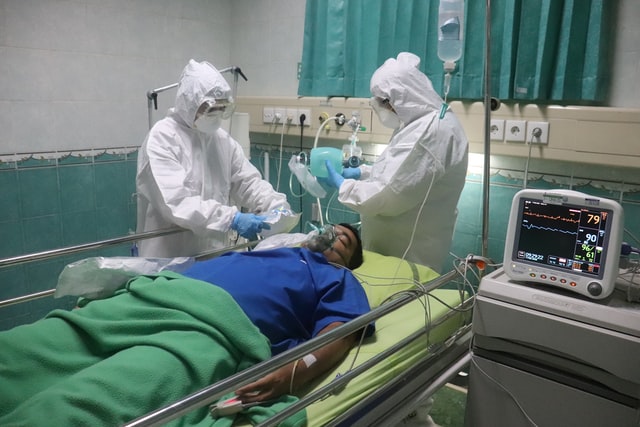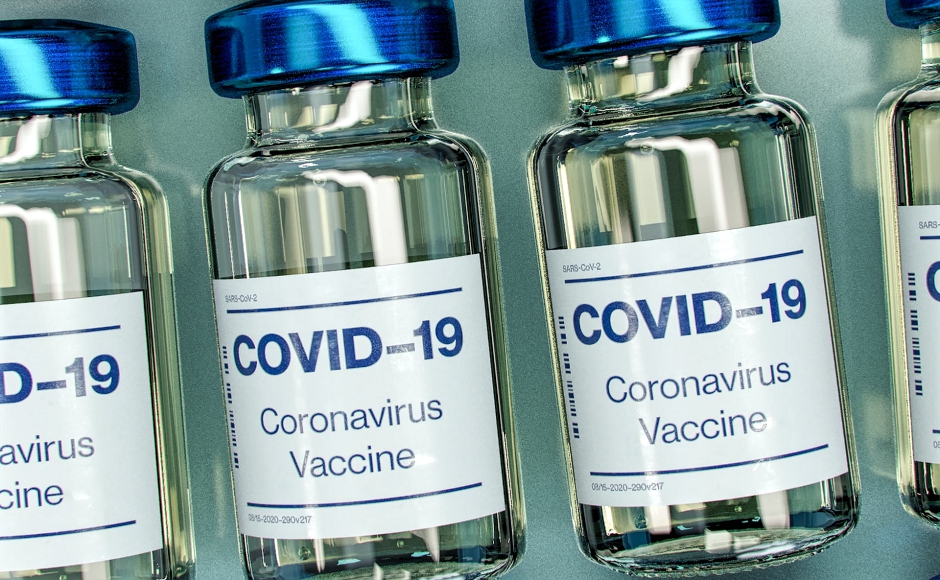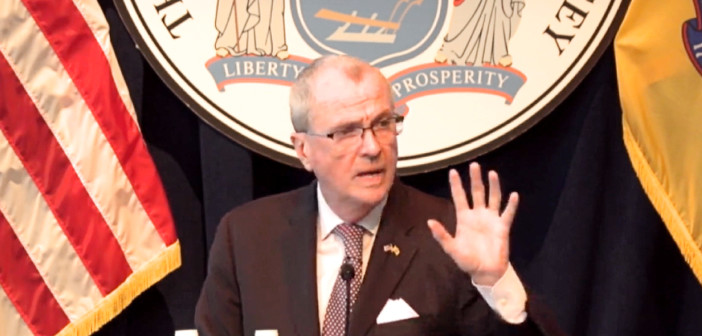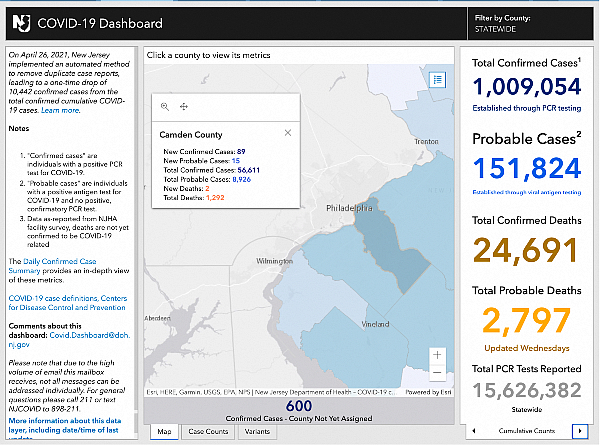‘We’re not going to hold ourselves to a zero reality here,’ Governor Murphy says of the endemic nature of the virus amid pandemic mitigation efforts.
By Matt Skoufalos | October 4, 2021
Another 1,111 New Jersey residents have tested positive for novel coronavirus (COVID-19), bringing the statewide total to 1.009 million cases confirmed via polymerase chain reaction (PCR) testing, Governor Phil Murphy reported Monday.
New Jersey is also reporting 218 new COVID-probable cases based on antigen tests, bringing the statewide total to 151,824 positive antigen tests.
Antigen tests have a faster turnaround time than PCR tests—sometime within 15 to 30 minutes—but are less reliable at detecting active infection of the virus, and more capable of reporting false positives.
Sadly, nine more residents have perished from complications related to the virus, bringing the statewide, confirmed death toll to 24,691 lives lost during the pandemic.
In addition to those lab-confirmed fatalities, the state has acknowledged another 2,797 probable COVID-19-related deaths—24 more than previously reported.
Since March 2020, 1,048 of every 100,000 New Jersey residents have been hospitalized with COVID-19, and 281 of every 100,000 have died from COVID-19-related complications.
More than 15.626 million polymerase chain reaction (PCR) tests for COVID-19 have been performed statewide, with a 11.477-percent positivity rate per 100,000 residents.
Rate of transmission (Rt) at 0.91, spot positivity highest in South Jersey
The statewide average of COVID-19 spot positivity testing based on PCR test results stood at 4.01 percent September 30; in South Jersey, it was highest, at 5.15 percent.
New Jersey Health Commissioner Judy Persichilli suggested that summer gatherings “primarily in the Southern portion of the state” could be behind its regionally higher positivity rate over the past several months.
Dr. Ed Lifshitz, who directs the state communicable disease service, said “there are a lot of different factors that go into those numbers, but we’re paying close attention.”
Rt, the variable that describes the seven-day, rolling-average, statewide rate of transmission of new COVID-19 cases, hit 0.91 on October 4.
Any Rt figure less than 1.0 means that each new COVID-19 patient is infecting fewer than one other person, on average, and the spread of the virus is decreasing.
Since its mid-April-2020 COVID-19 spike, the highest reported RT in New Jersey was 1.48, recorded August 1, 2020. Prior to artificially low, adjusted reports of 0.34 in the first week of May, the lowest in the past year was 0.62, recorded June 9, 2020. On May 21, 2021, it reached a new low, of 0.59.

Simulated COVID-19 patient in a hospital bed. Photo by Mufid Majnun on Unsplash
Hospitalizations holding steady
Throughout New Jersey, 1,074 people currently are hospitalized with a suspected (73) or confirmed (1,001) case of COVID-19, Murphy said.
Among those hospitalized patients, 243 are in intensive or critical care, and 135 of the ICU and critical-care patients (58 percent) are on ventilators.
In New Jersey’s 71 critical care hospitals, 99 patients were hospitalized with COVID-19 yesterday, while 77 others were discharged.
LTC update
Across the state, long-term care (LTC) centers have reported 1,734 cumulative outbreaks of COVID-19, and 158 are dealing with an active outbreak. LTCs account for 56,722 infected patients and staff in New Jersey, or 5.7 percent of total cases.
That includes 33,695 residents and 23,027 staffers sickened by the virus, as well as 8,552 lab-confirmed resident and staff deaths (35 percent of the statewide confirmed total), with facilities self-reporting 145 staff deaths.
Of 649 veterans residing in three state-run homes, 456 residents have tested positive for COVID-19, and 157 have died from complications related to the virus. Three hundred veterans have recovered from the virus. Six residents currently are COVID-19-positive.
The facilities at Menlo Park, Paramus, and Vineland are staffed by 1,366 workers, eight of whom are presently COVID-19-positive. The facilities have sustained two staff deaths related to the virus.
At state-run psychiatric hospitals, 374 of 1,135 patients and 1,136 staff members have tested positive for COVID-19. Fourteen patients and eight staffers have died from complications related to the virus.
MISC cases and schools
To date, 133 New Jersey children aged 1 to 18 have been diagnosed with pediatric multisystem inflammatory syndrome (MISC). Four of those cases were reported in Camden County, tied with Cumberland and Monmouth Counties for third-least in the state.
All those pediatric patients have tested positive for an active COVID-19 infection or the presence of COVID-19 antibodies, indicating exposure to the virus. No deaths have been associated with this syndrome in New Jersey, although several children have been hospitalized during their treatment for the illness.
From August 1, 2020 through the end of the 2020-2021 school year, 293 COVID-19 outbreaks encompassing 1,385 individual cases were traced to schools in all 21 New Jersey counties. In Camden County, 18 outbreaks were linked to 78 in-school cases, sixth-most in the state.
Since the start of the 2021-2022 school year, 39 reported outbreaks—three or more students or staff who contracted the virus within the school—have been logged, affecting 219 people, a mix of students and staff.

COVID-19 vaccine bottle mock-up. Photo by Daniel Schludi on Unsplash
NJ approaches 6M fully vaccinated people, exceeds 11M doses administered
Across New Jersey, 11.775 million COVID-19 inoculations have been administered.
Throughout New Jersey, 5.695 million people have been fully vaccinated in-state, having received either a one-shot formulation from Johnson and Johnson or both doses of the two-shot Pfizer or Moderna vaccines.
In Camden County, 626,647 doses have been administered, seventh-most in the state; 305,949 people have been fully vaccinated.
An estimated 453,177 vaccine doses have been administered to New Jersey residents outside of the state, of which 195,983 residents are estimated to have been fully vaccinated.
The first vaccines in the state were administered December 15, 2020; by February 8—55 days later—New Jersey had immunized its millionth resident. Twenty days thereafter, that count hit 2 million, and 3 million within two more weeks.
On March 29, New Jersey crossed the 4-million-dose threshold, and the state cleared 5 million doses over the weekend of April 10, 2021. Eight days after that, New Jersey hit the 6-million-dose mark. By May 3, 2021, the state had cleared 7 million doses administered, and two weeks later, it had surpassed 8 million doses.
As of June 2, 2021, the state had cleared 9 million administered doses and 4 million fully vaccinated New Jerseyans, and on June 18, hit 4.7 million vaccinated individuals, its target goal for 70 percent of the adult population of the state.
By mid-July, that number had increased to 5.019 people fully vaccinated at New Jersey vaccination sites. By the end of August 2021, the state had exceeded 11 million doses administered and had begun approaching 6 million fully vaccinated residents.
Breakthrough case data, January through September 2021
The data on breakthrough infections—circumstances in which fully vaccinated people test positive for COVID-19—continues to show the effectiveness in the vaccine preventing serious infection and death.
In the last nine months, 5.441 million New Jersey residents have been fully vaccinated against COVID-19 (January 19 through September 20). Of that population, 30,267 tested positive for COVID-19 after having been vaccinated (0.55 percent).
Since January 19, 629 fully vaccinated people required hospitalization because of the virus, and of the 5,900 COVID-19-related deaths suffered by New Jersey residents in that time, 158 (2.13 percent) were of vaccinated individuals.
Preliminary data from September 13 to September 19 show similar observations. Of the 13,762 positive tests reported in that five-day span, 3,414 (24.8 percent) were of fully vaccinated people, as were 42 of 1,000 people hospitalized with COVID-19 in that time (0.42 percent). Two of the 121 deaths reported during that time (1.71 percent) were of fully vaccinated people.
When can New Jerseyans expect to stop masking?
Asked for how much longer New Jerseyans should be expected to maintain pandemic mitigation efforts—including masking in public schools—amid increasing vaccination rates, Murphy offered an insight into how his administration regards the transition of COVID-19 from pandemic to endemic virulence.
“Our operating assumption is that it’s going to be in our midst,” the governor said. “We’re not going to hold ourselves to a zero reality here,” waiting for positive cases to fall to zero before relaxing protective mandates, he said.
“We’re going to make moves and make decisions based on what we think is a reasonable, expected, future state of the virus,” Murphy said.
As the colder weather approaches and more people gather indoors, the governor suggested that the state “could see some bumps,” but pointed to a need to get more residents vaccinated, while maintaining other protections, including masking indoors.
Dr. Lifshitz said that indoor masking recommendations could only relax when the virus has subsided, become less deadly, or among “other measures to protect people,” such as more widespread vaccinations, including those for children.
Please support NJ Pen with a subscription. Get e-mails, follow us on Facebook, Twitter, and Instagram, or try our Direct Dispatch text alerts.






